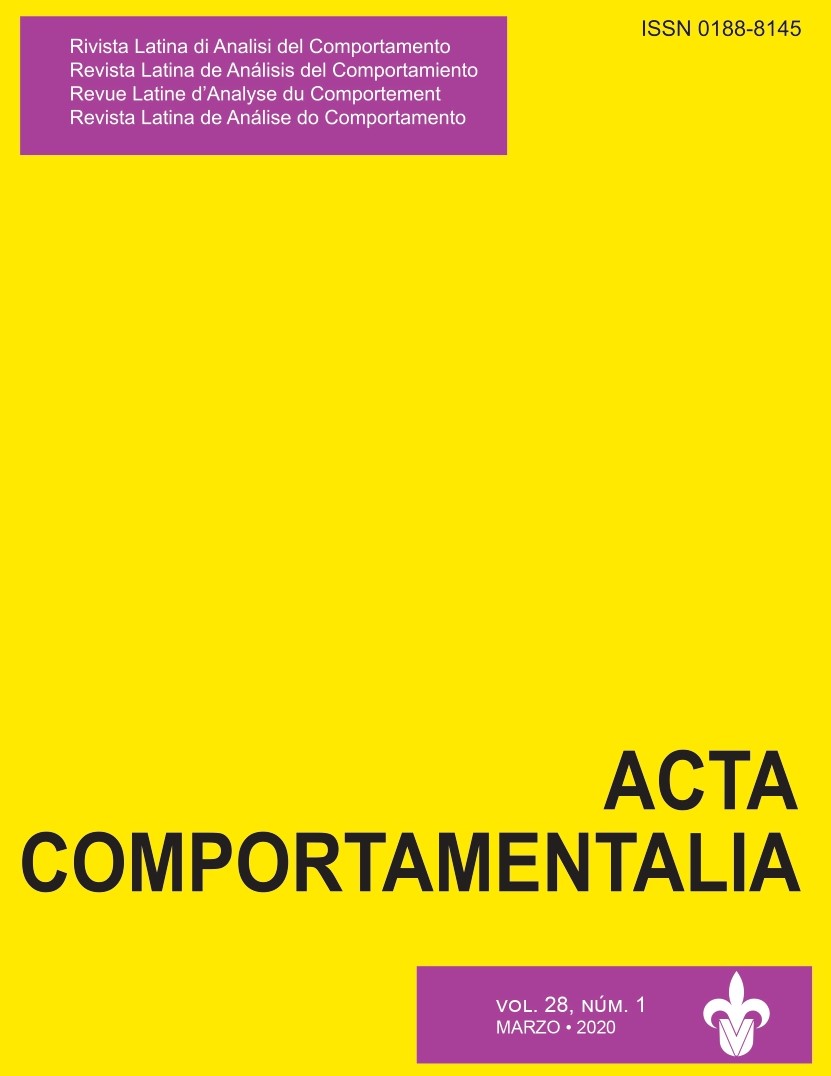Emergência de classes de estímulos por bebês: uma revisão sistemática de estudos empíricos
Contenido principal del artículo
Resumen
Behavior Analysis studies several phenomena of Psychology interest, such as cognition, language, categorization, etc., as behavioral processes according to the area of Stimulus Control. This area argues that stimuli or stimuli dimensions control the individual responses due to a previous history of reinforcement. The stimulus classes that control the response are formed based on physical similarity or arbitrary relations, that is, between stimuli without physical similarity. Sidman proposed that conditional discriminations and this history of reinforcement might favor the emergence of arbitrary stimulus classes, with relations that have never been trained before, ie directly reinforced. Traditionally, experiments investigating the emergence of equivalence stimulus classes use the Matching to sample procedure and, from baseline teaching, making properties equivalence tests, like symmetry test, transitivity tests, and reflexivity testes. When the individual presents performance with the emergent relations, demonstrating that the stimuli are interchangeable with each other, the results indicate that he formed the classes of equivalent stimuli. However, the way and the prerequisites for the arbitrary stimulus class establishment are not fully established in the literature, so it is important to study young children to follow the development of the prerequisites for the arbitrary class’s emergence. Despite this, although the literature indicates advances and promising results for the study of 36-month-old child, the stimulus classes emergence investigation in the repertoire of young children is still scarce when compared to the number of studies performed for children and adults in general. The objective of this study was to contrast procedures aspects with their main results in the studies on stimulus classes emergence by infants (up to 36 months of age). For this, a systematic review of the literature search for empirical researches, published between 1984 and 2018, in periodicals in the databases of free access. The selection of articles was carried out in the databases PEPSIC, INDEXPSI, LILACS, CAPES, SCIELO, SCOPUS and PSYCINFO, with the combination of descriptors 1) “relational responses”, “stimulus equivalence” and 2) “young children”, “toddlers” , “Infants” and used the checklist of Preferred Reporting Items for Systematic Reviews and Meta-Analysis (PRISMA). The research found a list with 1440 articles, but after the elimination of repeated titles and application of the selection criteria, only 15 articles were selected for analysis. As results, all articles used matching to sample variations and 14 of them obtained positive results with children up to 36 months of age. Only in one study there was no results of stimulus equivalence with infants up to 36 months of age, and this result was due to methodological aspects employed. However, differences in the variables studies operationalization challenge the comparison of the results between the studies; for example, there was a great variation of learning criteria, consequences for correctness and error, lack of information about participants’ entrance repertoire, among others. The area will have an arduous task in the procedures and results systematization and propose appropriate conditions for research and application with this population.
Detalles del artículo

<a rel="license" href="http://creativecommons.org/licenses/by-nc-sa/4.0/"><img alt="Licencia de Creative Commons" style="border-width:0" src="https://i.creativecommons.org/l/by-nc-sa/4.0/88x31.png" /></a><br />Este obra está bajo una <a rel="license" href="http://creativecommons.org/licenses/by-nc-sa/4.0/">licencia de Creative Commons Reconocimiento-NoComercial-CompartirIgual 4.0 Internacional</a>.
